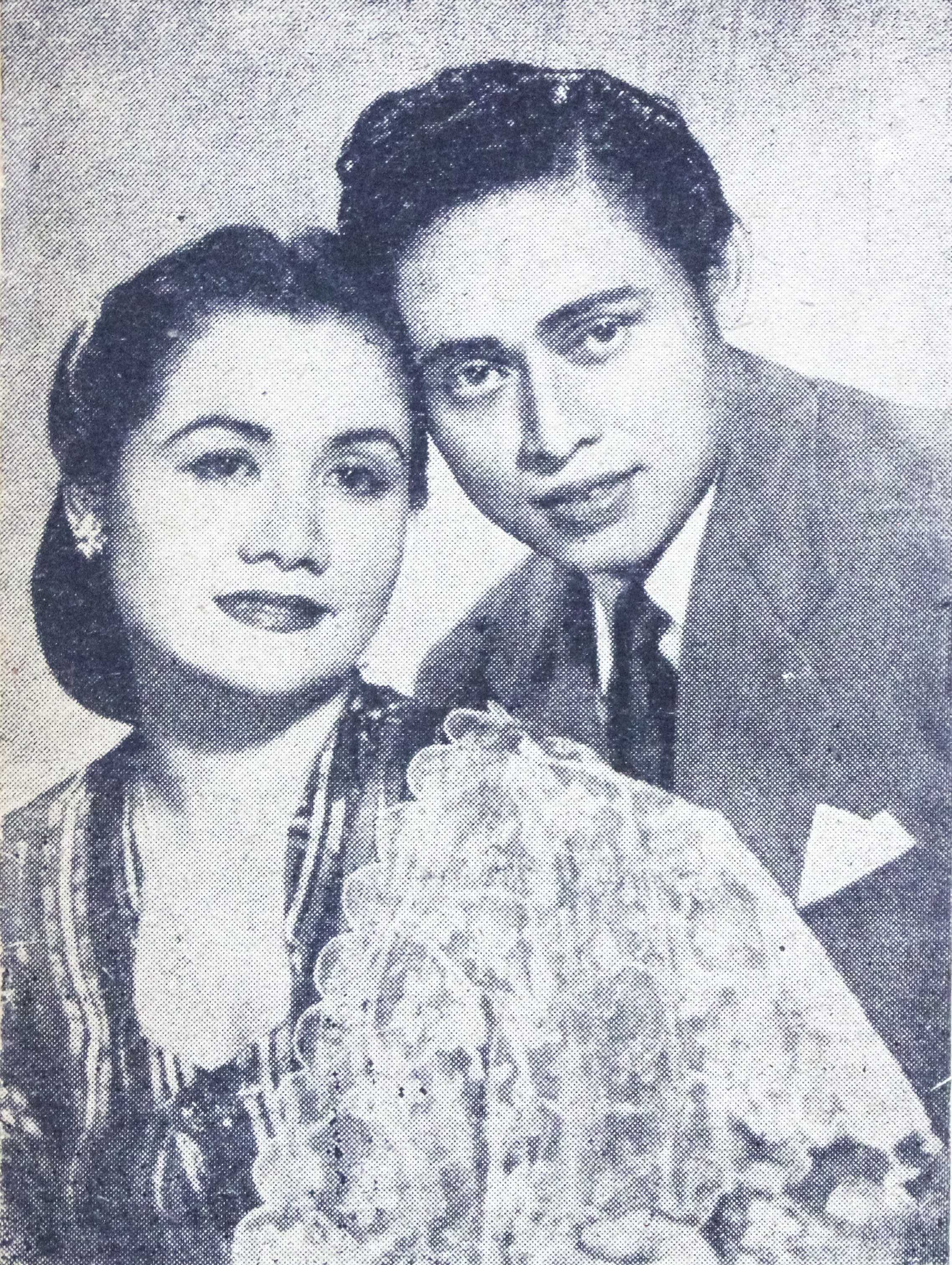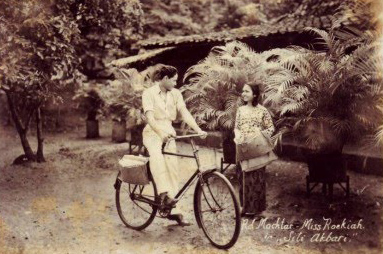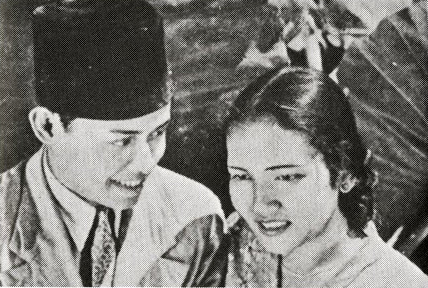|
Rd Mochtar
Hajji Raden Mochtar (born 1918), often credited as Rd Mochtar, was an Indonesian actor. Of noble descent, Mochtar was discovered by Albert Balink and first cast in the commercial failure ''Pareh'' (1936). Rising to popularity after the release of ''Terang Boelan'' the following year, he spent nearly sixty years in film, while also becoming a businessman and farmer. Childhood and early career Mochtar was born in Cianjur, West Java, in 1918. He was a Javanese of ''priyayi'' (noble) descent. He did his elementary school studies at a Taman Siswa school in Bandung. In 1935 Mochtar was cast in the leading role of Mahmud in Albert Balink's film ''Pareh''. Balink was out with coffee with Joshua and Othniel Wong and saw Mochtar, whom he considered tall, strong, and handsome, driving by. Balink and the Wongs chased Mochtar in their car and caught him. For the film Mochtar was told to use the title ''Raden'', which he and his family had already abandoned. According to the Indonesian a ... [...More Info...] [...Related Items...] OR: [Wikipedia] [Google] [Baidu] |
Siti Akbari
''Siti Akbari'' is a 1940 film from the Dutch East Indies (now Indonesia) directed by Joshua and Othniel Wong and produced by Tan Khoen Yauw. Starring Roekiah and Rd Mochtar, it follows a couple while the husband commits adultery. Plot Siti Akbari (Roekiah) is living happily with her husband. When he begins to wander she stays faithful and he eventually comes back to her. Production ''Siti Akbari'' was directed by Joshua and Othniel Wong, ethnic Chinese brothers who had received film training in the United States and been active in the film industry of the Dutch East Indies since 1929's ''Lily van Java''. The film's producer, Tan Khoen Yauw, was co-owner of the production studio that made the work, Tan's Film. The black-and-white talkie featured vocals by the actresses Annie Landouw and Titing, with the ''keroncong'' group Lief Java providing background music. Several further cast members, including the stars Mochtar, Roekiah, and her husband Kartolo, had migrated to Tan's aft ... [...More Info...] [...Related Items...] OR: [Wikipedia] [Google] [Baidu] |
Star System (filmmaking)
The star system was the method of creating, promoting and exploiting stars in Hollywood films from the 1920s until the 1960s. Movie studios would select promising young actors and glamorise and create personas for them, often inventing new names and even new backgrounds. Examples of stars who went through the star system include Cary Grant (born Archibald Leach), Joan Crawford (born Lucille Fay LeSueur), and Rock Hudson (born Roy Harold Scherer, Jr.). The star system put an emphasis on the image rather than the acting, although discreet acting, voice, and dancing lessons were a common part of the regimen. Women were expected to behave like ladies, and were never to leave the house without makeup and stylish clothes. Men were expected to be seen in public as gentlemen. Morality clauses were a common part of actors' studio contracts. Studio executives, public relations staffs, and agents worked together with the actor to create a star persona and cover up incidents or lifestyles ... [...More Info...] [...Related Items...] OR: [Wikipedia] [Google] [Baidu] |
Sedap Malam
''Sedap Malam'' (Indonesian for ''Sweetness of the Night'') is a 1951 film directed by Ratna Asmara and produced by Djamaluddin Malik for Persari. Starring Sukarsih and , it follows a woman who descends into prostitution after her husband marries another woman. It was both Persari's first production and the first film directed by a woman in Indonesian history. Plot Over a period of several years, Patmah has worked to help her husband Tamin build his book-selling business into a large printing house. However, in the early 1940s, after the business begins to succeed Tamin takes on a younger wife. Outraged at her husband's polygyny, Patmah abandons him and goes to work as a nurse, leaving their four-year-old daughter Nuraini with her friend, Tinah. During the Japanese occupation, Patmah is promised that she can receive further training as a nurse in Tokyo. Upon arrival, however, she discovers that the young nurses are actually intended as comfort women. Patmah thus spends the rema ... [...More Info...] [...Related Items...] OR: [Wikipedia] [Google] [Baidu] |
Bengawan Solo (1949 Film)
''Bengawan Solo'' (Indonesian for ''Solo River'') is a now-lost 1949 film from what is now Indonesia. Directed by Jo An Djan, it starred Sofia WD, Rd Mochtar, and Mohamad Mochtar. Plot After falling for the false promises of the womanising nobleman Suprapto (Rd Mochtar), Wenangish (Sofia WD) commits suicide by throwing herself into the Solo River, leaving only a letter for her two children, Sriwulan (Ratna Ruthinah) and Hindrawati (Churiani). The former is raised by the family of nobleman Widagdo (Rd Dadang Ismail), while the latter is raised by a poor man named Kromo ( S Waldy), eventually becoming a servant at Widagdo's home. When they are adults, Sriwulan is engaged by her adoptive father to Suprapto's son, despite loving another man. When her hitherto unknown uncle, Prawoto (Mohamad Mochtar), returns from his job in Borneo, he prevents the two from marrying, instead showing that they were both fathered by Suprapto. The marriage is cancelled, and Suprapto – seeing a vis ... [...More Info...] [...Related Items...] OR: [Wikipedia] [Google] [Baidu] |
Moestika Dari Djemar
''Moestika dari Djemar'' (Perfected Spelling: ''Mustika dari Djemar'') is a 1941 film from the Dutch East Indies (now Indonesia). Multiple modern sources also use the incorrect spelling ''Moestika dari Djenar'',For instance and but contemporary sources uses an "m". ''Moestika dari Djemar'' was directed by Jo An Djan and produced by Jo Kim Tjan for Populair's Film. The black-and-white film starred Dhalia, Rd Mochtar, Rd Kosasie, Eddy T Effendi, and 9-year-old Djoeriah (in her feature film debut). The studio had been established the preceding year and already released a single film, ''Garoeda Mas'', the year before. The film was produced shortly following ''Ratna Moetoe Manikam'', released with The Teng Chun's Java Industrial Film, and took similar source material: as with ''Moestika dari Djemar'', it was drawn from the ''One Thousand and One Arabian Nights'', though the films were taken from different stories. Other contemporary works adapted from ''Nights'' were Tan's Film's ''Ala ... [...More Info...] [...Related Items...] OR: [Wikipedia] [Google] [Baidu] |
Gagak Item
''Gagak Item'' (; Vernacular Malay for ''Black Raven'', also known by the Dutch title ''De Zwarte Raaf'') is a 1939 bandit film from the Dutch East Indies (now Indonesia) directed by Joshua and Othniel Wong for Tan's Film. Starring Rd Mochtar, Roekiah, and Eddy T. Effendi, it follows a masked man known only as "Gagak Item" ("Black Raven"). The black-and-white film, which featured the cast and crew from the 1937 hit ''Terang Boelan'' (''Full Moon''), was a commercial success and received positive reviews upon release. It is likely lost. Production ''Gagak Item'' was directed by brothers Joshua and Othniel Wong; filming the work in black-and-white, they also handled sound editing. It was produced by Tan Khoen Yauw of Tan's Film and starred Rd Mochtar, Roekiah, Eddy T. Effendi, and Kartolo. The Wongs and cast had first worked together on Albert Balink's 1937 blockbuster ''Terang Boelan'' (''Full Moon''), before joining Tan's Film in 1938 for the highly successful '' Fatima' ... [...More Info...] [...Related Items...] OR: [Wikipedia] [Google] [Baidu] |
Mecca
Mecca (; officially Makkah al-Mukarramah, commonly shortened to Makkah ()) is a city and administrative center of the Mecca Province of Saudi Arabia, and the Holiest sites in Islam, holiest city in Islam. It is inland from Jeddah on the Red Sea, in a narrow valley above sea level. Its last recorded population was 1,578,722 in 2015. Its estimated metro population in 2020 is 2.042million, making it the List of cities in Saudi Arabia by population, third-most populated city in Saudi Arabia after Riyadh and Jeddah. Pilgrims more than triple this number every year during the Pilgrimage#Islam, pilgrimage, observed in the twelfth Islamic calendar, Hijri month of . Mecca is generally considered "the fountainhead and cradle of Islam". Mecca is revered in Islam as the birthplace of the Prophets and messengers in Islam, Islamic prophet Muhammad. The Hira cave atop the ("Mountain of Light"), just outside the city, is where Muslims believe the Quran was first revealed to Muhammad. Vis ... [...More Info...] [...Related Items...] OR: [Wikipedia] [Google] [Baidu] |
Hajj
The Hajj (; ar, حَجّ '; sometimes also spelled Hadj, Hadji or Haj in English) is an annual Islamic pilgrimage to Mecca, Saudi Arabia, the holiest city for Muslims. Hajj is a mandatory religious duty for Muslims that must be carried out at least once in their lifetime by all adult Muslims who are physically and financially capable of undertaking the journey, and of supporting their family during their absence from home. In Islamic terminology, Hajj is a pilgrimage made to the Kaaba, the "House of God", in the sacred city of Mecca in Saudi Arabia. It is one of the Five Pillars of Islam, alongside Shahadah (oath to God), Salat (prayer), Zakat (almsgiving) and Sawm (fasting of Ramadan). The Hajj is a demonstration of the solidarity of the Muslim people, and their submission to God ( Allah). The word Hajj means "to attend a journey", which connotes both the outward act of a journey and the inward act of intentions. The rites of pilgrimage are performed over five to six ... [...More Info...] [...Related Items...] OR: [Wikipedia] [Google] [Baidu] |
Rodrigo De Villa
''Rodrigo de Villa'' is an Indonesian-Philippine historical drama film released in 1952. It was co-produced by Philippine-based LVN Studio and Indonesia-based Persari. The film is the first international co-production done by a Filipino film studio with a studio outside the Philippines. Done in Ansco Color, the ''Rodrigo de Villa'' is the first Indonesian film production in color. Two versions of the film were made with each version having a different casting. The Philippine version was directed by Gregorio Fernandez while the Indonesian version was directed by Rempo Urip. Cast *Rd Mochtar / Mario Montenegro as Rodrigo de Villa *Netty Herawaty / Delia Razon as Jimena * Rendra Karno as Don Juan * Darussalam as Don Pedro * Soekarsih as Queen Isabella * Nana Mayo as Selima * Astaman as King Alfonso * Awaludin as King Lozano * Djuriah Karno * A Hadi as King Leynes * R.H. Andjar Subyanto as Duke Montero * Pete Elfonso * Dhira Soehoed * Mimi Mariani Sumiarto Suharto (b ... [...More Info...] [...Related Items...] OR: [Wikipedia] [Google] [Baidu] |
Cinema Of Indonesia
Cinema of Indonesia is film that is produced domestically in Indonesia. The Indonesian Film Agency or BPI defines Indonesian film as "movies that are made with Indonesian resources, and wholly or partly Intellectual Property is owned by Indonesian citizens or legal entities in Indonesia". It dates back to the early 1900s. Until the 1920s, most cinema in Indonesia was produced by foreign studios, mostly from Europe, and the United States, whose films would then be imported to the country. Most of these films were silent documentaries and feature films from France and the United States. Many documentaries about the nature and life of Indonesia were sponsored by the Dutch East Indies government and were usually made by the Dutch or at least Western European studios. The first domestically produced documentaries in Indonesia were produced in 1911. However, the first domestically produced film in the Dutch East Indies was in 1926: '' Loetoeng Kasaroeng'', a silent film, which was an ... [...More Info...] [...Related Items...] OR: [Wikipedia] [Google] [Baidu] |
Indonesian National Revolution
The Indonesian National Revolution, or the Indonesian War of Independence, was an armed conflict and diplomatic struggle between the Republic of Indonesia and the Dutch Empire and an internal social revolution during Aftermath of WWII, postwar and Dutch East Indies#World War II and independence, postcolonial Indonesia. It took place between Indonesian Declaration of Independence, Indonesia's declaration of independence in 1945 and the Netherlands' Dutch–Indonesian Round Table Conference, transfer of sovereignty over the Dutch East Indies to the Republic of the United States of Indonesia at the end of 1949. The four-year struggle involved sporadic but bloody armed conflict, internal Indonesian political and communal upheavals, and two major international diplomatic interventions. Dutch military forces (and, for a while, the forces of the World War II Allies, World War II allies) were able to control the major towns, cities and industrial assets in Republican heartlands on Ja ... [...More Info...] [...Related Items...] OR: [Wikipedia] [Google] [Baidu] |






